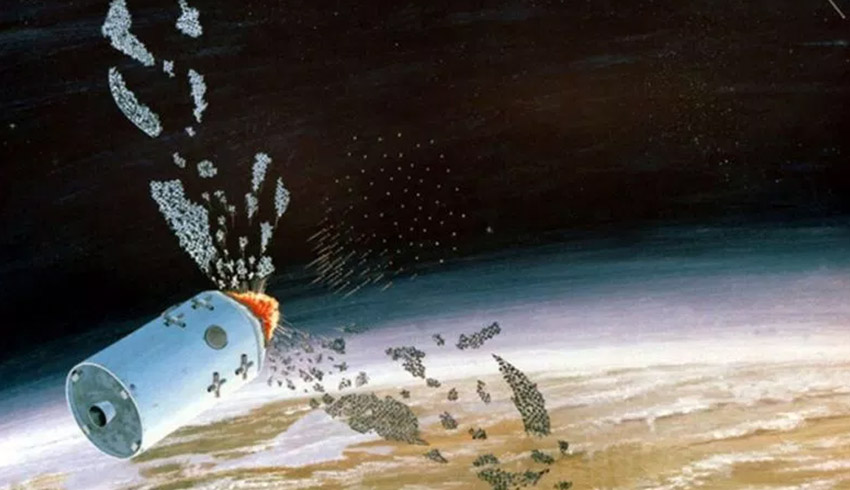That created risk of a “space Pearl Harbor” is designed to leave the US and allies deaf, dumb and blind, warns Australian Strategic Policy Institute senior analyst Dr Malcolm Davis in a new paper.
He said the consequences of an effective offensive counterspace campaign would be severe, significantly diminishing overall military effectiveness of the Australian Defence Force (ADF).
It would be forced to rely purely on terrestrial capabilities for vital tasks. In some cases, such as secure global communications and timely reconnaissance there would be no adequate or complete substitute.
“Such an outcome would severely erode the ADF’s ability to undertake information-led joint, integrated and coalition operations,” he said.
“The loss of access to space capability would rob the ADF of a means to fight war and conduct other military operations in a manner most conducive to likely success.”
The ADF relies on a range of space delivered capabilities for communications, navigation and surveillance.
So far Australia’s largest single investment is in space-based defence capability, and this was funding of one of 10 satellites in the US Wideband Global SATCOM (WGS) constellation.
With a cost at around $1 billion, it includes the satellite, launch and ground infrastructure, and gives Australia access to a tenth of the capacity of the WGS system.
Australia also has access to Defence payloads on the Optus C1 and Intelsat IS-22 commercial satellites.
Defence plans to replace it all with a new Australian Defence SATCOM System (ASDSS) under program JP9102 from the mid-next decade. Project DEF 799 Phase 2 will potentially give the ADF a space surveillance capability.
Australia also has access to the US Global Positioning System (GPS) constellation (as does everyone).
While, Australia has no national intelligence, surveillance and reconnaissance (ISR) satellite capability, it does have access to allied systems, specifically the US National Reconnaissance Office (NRO).
The joint facility at Pine Gap plus Exmouth provides Australia with important ground facilities. Australia also hosts ground facilities for space situational awareness (SSA), that is tracking space debris and other people’s satellites.
But space is far from a peaceful commons. Dr Davis said space was contested, congested and competitive and fast becoming a war-fighting domain in its own right.
In previous decades space was seen primarily as an adjunct to traditional air, sea and land domains, with a presumption that they would remain untouched by warfare below.
China changed that in January 2007 with a successful anti-satellite missile (ASAT) test.
Dr Davis said that was a warning shot which ended the comfortable assumption that US and ally military forces would always have uninterrupted access to space capabilities and the ability to fight in a manner most conducive to their success.
He said space was set to become even more contested.
China and the USSR are developing a suite of counterspace capabilities.
That includes direct-ascent anti-satellite weapons, missiles launched from Earth to physically destroy a target satellite, and co-orbital ASATs which can manoeuvre close to a target satellite and then destroy it through collision or disable it by electronic attack or physical interference.
There’s also terrestrial counterspace capability, such as satellite uplink and downlink jamming and spoofing techniques, laser-dazzling and, ultimately, cyber attack.
While ASATs are certainly effective, the downside is a debris field just as likely to damage or destroy everyone’s satellites. More appealing for an adversary may be grey zone operations, including jamming and cyber attack.
Dr Davis said states would increasingly seek to avoid ASAT and counterspace capabilities that generated large amounts of space debris.
“The emphasis will be on soft kills with rapid, scalable and reversible effects, along with a requirement for deniability if not outright anonymity,” he said.
“Key capabilities of the space battlefield of 2035 will be directed-energy weapons, cyber attacks, advanced electronic warfare and ubiquitous jamming. Space war may happen at the speed of light, as satellites go dead without warning.”
Dr Davis said the ADF must therefore plan for fighting through a contested space environment to achieve operational success.
“Australia lacks the ability to undertake space negation, but we can expand our ability for defensive space control through augmentation, disaggregation and reconstitution, and in doing so fully utilise our sovereign space industry to support defence tasks,” he said.
“The starting point towards that goal must be the development of a clear and coherent space defence policy.”
Rather than relying on small numbers of large, complex and expensive satellites, Australia could improve space resilience with larger numbers of small satellites produced by Australian industry and launched from Australian territory.
That could have the effect of deterring an adversary, who would risk retaliation for an attack on space capabilities which has limited impact.
But could or should Australia develop a counterspace capability? Dr Davis said an Australian ASAT capability would run counter to Australia’s support for norms seeking to make space as much as possible a peaceful environment for co-operation.
However, Defence should consider a ground-based counterspace capability based on electronic warfare, jamming, laser-dazzling and cyber warfare, mostly as a means of deterrence.
As well, Defence needs to establish new organisational structures, concentrating space expertise in one body, rather than having activities spread across the Defence organisation.

